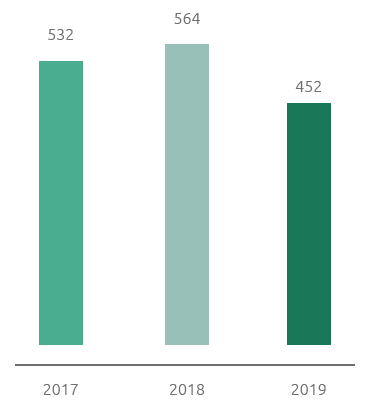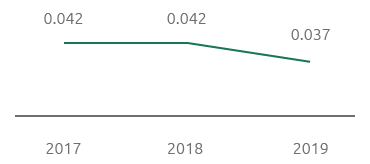Nitrogen oxide emissions
The use of natural gas as the main energy source allows sulphur oxides and particle emissions to be minimised compared to the use of other fossil fuels. Of these, the only significant emissions are those of nitrogen oxides (NOx) , that derive mainly from the combustion of natural gas in the gas turbines installed in the compression plants (thrust and storage). A programme was launched in recent years to curb these emissions by replacing traditional turbines with low emission turbines which, to date, account for almost all the turbines installed. Specifically, with the DLE turbine coming into operation in 2019 in the Minerbio storage plant as well, all the storage sites were operating with low emission units.
The reduction in energy consumption and the virtually total use of DLE turbines has led to a reduction in total nitrogen oxide emissions, in absolute terms of -20% compared to 2018 and a reduction in the ratio between nitrogen oxide emissions and energy use of 12%.
Average NOx emissions for the installed power of the storage machinery were further reduced by almost 30% going from 5.2 to 3.7 ([mg/Nm3]/MW) while those for thrust remained unchanged, taking into account that they had already reached 3.8 ([mg/Nm3]/MW) last year.
Total NOx emissions (t)

NOx emissions/energy used (kg/GJ)

Emissions of NOx into the atmosphere were calculated based on direct measurements or, if not available, through emission factors in literature (EMEP/EEA “Air pollutant emission inventory guidebook” European Monitoring and Evaluation Programme/European Environment Agency).